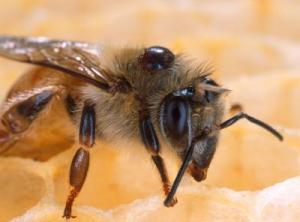The yellow-black wood bees, the bumblebee, are also disappearing all over the world and they also play an important role in pollinating tree flowers more efficiently than the honey bee

Israeli researchers have identified a virus carried by Israeli bees, it is assumed that the spread of the virus originating in our environment to the continents of Europe and America is one of the reasons for the mysterious disappearance of the honey bees. A lot has also been written about the danger associated with the lack of honey bees from nature, pollination of flowers in bar and agriculture is a very important role that the bees carry, fewer bees ... less pollination ... less fruit ... less seeds and so on.
But now it turns out that the harm is not only to the honey bees, for many years the branch of fertilization/pollination of flowers in agriculture has been developing. Naturally, the honey bee was considered to have the important role, but over the years and experience it turned out that for many crops with large and durable flowers there is a better pollinator than the honey bee, in order to succeed in pollinating many flowers the flowers must be vibrated at high frequencies. The higher the frequencies, the more effective the pollination.
The one who manages to vibrate the flowers at high frequencies is the wood bee, a large black and yellow bee known by its foreign name bumblebee. Farmers have recognized the wood bee's skills in pollinating flowers and its hives are scattered in habitats, greenhouses and plastic tunnels.
Since the 90s, the wood bee is responsible for pollinating more than 15% of agricultural crops, mainly crops in greenhouses and closed habitats. In the USA, the "work" of the wood bee is estimated at about 3 billion dollars. Every geographical area and every continent has different species of wood bees, with many of the species being "cultivated" for the sake of agricultural crops all over the world.
After the problem of the disappearance of the honey bees was identified and researchers began to look for the reasons for the disappearances, it turned out that the tree bee was also affected by the problem. Three species of wood bee that were common in North America have become rare. One species went extinct even before the problem was identified.
Due to the disappearance of honey bees, the demand (from farmers) for wood bees increases, and since the wood bee population is also affected, the fear for the future of flower plants in general and agricultural crops in particular increases. A number of factors are examined as culprits in the disappearance of bees: global warming, the increased use of insecticides, parasitic aphids, and recently the same virus that was detected in Israel, until the cause of the disappearance of bees is discovered, there is a race to save the species, saving the bees which means saving the flowering plants, in agriculture and in nature.
Dr. Assaf Rosenthal, ecologist,
Tour guide/leader in Africa and South America.
For details: Tel. 0505640309 / 077-6172298,
Email: assaf@eilatcity.co.il

6 תגובות
There is confusion between the bumble bee and the wood bee.
Quote from the article:
"The fear is increasing for the future of flower plants in general and agricultural crops in particular"
Has anyone here gotten confused between general and specific?
fixed. Thanks.
Spelling mistakes
Farmers recognized the links of the wood bee in pollinating flowers and its hives
The reference is to the bee's "skills" and not to its "links"
pestle